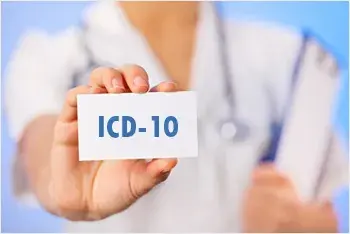Orthopedic practices face the challenge of inappropriate use of codes labeled ‘unspecified’ while coding traumatic fractures for ICD-10, since this medical coding system differentiates traumatic fractures from pathological fractures. The American Health Information Management Association (AHIMA) has already insisted that the healthcare practitioners should focus on their documentation to identify the gaps that need to be filled before the ICD-10 implementation on October 1, 2014. In such a scenario, it is quite imperative for orthopedic practices to understand the ICD-10 documentation requirements for traumatic fractures to resolve the coding challenges. The ICD-10 codes S00-T88 are used to report traumatic fractures. The key ICD-10 documentation elements for traumatic fractures are:
- Location and Laterality (L) – The documentation must have the name of the bone and the exact location of the fracture on the bone along with information about whether the fracture occur on the right or left side of the body when appropriate. For example, if contusion of left shoulder is diagnosed and you document it as ‘contusion of shoulder’, then the ICD-10 code assigned will be S40.01, which is not an appropriate code. There is an ICD-10 code for ‘contusion of left shoulder’ (S40.012). The coder can report this correct code only if your documentation shows ‘contusion of left shoulder’.
- Encounter (E) – In ICD, the term ‘encounter’ indicates the treatment status. Initial and subsequent are the two types of encounters specified in ICD-10. If the patient is already receiving active treatment for traumatic fractures, initial encounter codes are used (for example, evaluation by a new physician). When the patient is receiving care for traumatic fractures in recovery phase once the active treatment ends, subsequent encounter codes are used (for example, cast change or removal). Unless you specify the encounter type along with ‘contusion of left shoulder’, the coders will not be able to assign the most appropriate code from S40.012A (contusion of left shoulder, initial encounter) and S40.012D (contusion of left shoulder, subsequent encounter). Even so, it has not been yet clarified whether you must use the word ‘initial encounter’ and ‘subsequent encounter’ as such in the documentation. A statement to ‘follow-up with routine healing’ indicates subsequent encounter.
- Open or Closed (O) – A statement that describes whether the fracture is open or closed must be included in the documentation. Suppose a patient is diagnosed with displaced open fracture of neck of scapula at right shoulder and is receiving active treatment. If you are documenting ‘displaced fracture of neck of scapula at right shoulder’ only, then the code assigned will be S42.151, which is not an appropriate code. You should document it as open fracture and indicate the patient is receiving active treatment so that the most appropriate code, S42.151B (Displaced fracture of neck of scapula, right shoulder, initial encounter for open fracture) will be assigned.
- Classification, Category, or Cause (C) – This element points towards different things according to the location and type of fracture. For example, documentation for a physical fracture must require the correct Salter-Harris classification while a modified Neer classification is used to describe certain fractures of the proximal humerus.
- Fracture Pattern (F) – The documentation must include the fracture pattern and fracture locations. The terms used to specify fracture patterns at various locations are transverse, spiral, greenstick, comminuted, oblique, longitudinal and segmental. An example of an ICD-10 code that requires fracture pattern is S82.232 (Displaced oblique fracture of shaft of left tibia).
- Alignment (A) – The documentation must note the alignment of the bones (whether it is a displaced or non-displaced fracture). For example, the coders can choose the appropriate code from S82.232 (Displaced oblique fracture of shaft of left tibia) and S82.235 (Non-displaced oblique fracture of shaft of left tibia) in case of a oblique fracture of shaft of left tibia only with this information.
- Result (R) – The results including routine healing, delayed healing, malunion, or nonunion must be documented at each encounter following the active phase of treatment for traumatic fractures. This information will help the coders to choose the appropriate code among S82.232D (subsequent encounter for closed fracture with routine healing), S82.232G (subsequent encounter for closed fracture with delayed healing), S82.232K (subsequent encounter for closed fracture with nonunion) and S82.232P (subsequent encounter for closed fracture with malunion) in case of displaced closed oblique fracture of shaft of left tibia.
Even if you produce accurate documentation by following these rules, coding mistakes may occur if the documentation is not handled by trained coders owing to the complexity of ICD-10 codes, and ultimately result in revenue loss. By seeking the help of a professional medical billing and coding company that offers the service of trained AAPC certified coders, you can minimize such kind of mistakes and receive the due reimbursement.



0 Comments